Grow Crunchy Cucumbers Indoors? Absolutely! Imagine biting into a perfectly crisp, refreshing cucumber, grown right in your own home, even when the weather outside is frightful. Forget those bland, watery cucumbers from the grocery store – we’re talking about homegrown goodness, bursting with flavor and satisfying crunch.
For centuries, cultivating cucumbers has been a sign of resourcefulness and connection to nature. From ancient civilizations using them for medicinal purposes to modern gardeners cherishing their refreshing taste, cucumbers have always held a special place. But what if you don’t have a sprawling garden? That’s where the magic of indoor gardening comes in!
In today’s busy world, finding moments of peace and connection with nature can be a challenge. Plus, let’s be honest, fresh produce prices are soaring! That’s why learning how to grow crunchy cucumbers indoors is more relevant than ever. It’s a fantastic way to bring a touch of the outdoors in, enjoy fresh, healthy food, and even save some money. I’m going to share some simple, yet effective DIY tricks and hacks that will have you harvesting delicious cucumbers from your indoor garden in no time. Get ready to roll up your sleeves and let’s get growing!
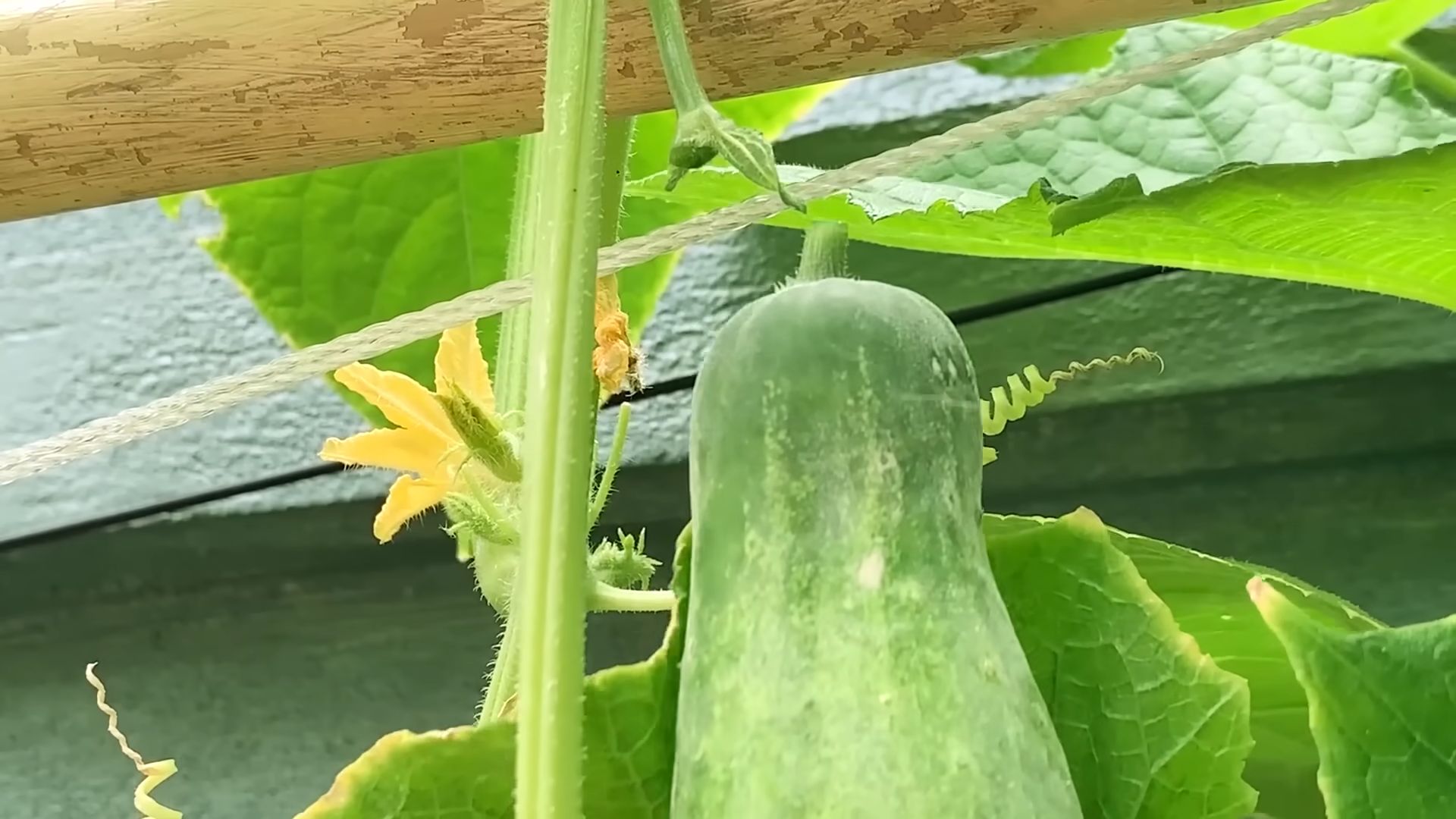
Growing Crunchy Cucumbers Indoors: A DIY Guide
Hey there, fellow gardening enthusiasts! Are you craving the crisp, refreshing taste of homegrown cucumbers but don’t have the outdoor space? Don’t worry, I’m here to tell you that growing crunchy cucumbers indoors is totally achievable! I’ve done it myself, and I’m excited to share my secrets with you. This guide will walk you through every step, from choosing the right variety to harvesting your delicious bounty. Let’s get started!
Choosing the Right Cucumber Variety
Not all cucumbers are created equal, especially when it comes to indoor growing. You’ll want to select a variety that’s compact, disease-resistant, and doesn’t require pollination (parthenocarpic). Here are a few of my favorites:
* Spacemaster: This is a bush-type cucumber, perfect for containers. It produces short, dark green fruits.
* Bush Champion: Another excellent bush variety that yields a good number of medium-sized cucumbers.
* Little Leaf: As the name suggests, this variety has smaller leaves, which means better air circulation and less susceptibility to disease.
* English Cucumbers (like ‘Telegraph’ or ‘Sweet Success’): These are long, slender, and seedless. They are parthenocarpic, so you don’t need to worry about pollination.
Setting Up Your Indoor Cucumber Garden
Before you even think about planting, you need to create the right environment for your cucumbers to thrive.
* Light: Cucumbers need at least 6-8 hours of direct sunlight per day. If you don’t have a sunny window, invest in a good quality grow light. I personally use LED grow lights, and they work wonders.
* Container: Choose a large container, at least 12 inches in diameter and depth. Cucumbers have extensive root systems, so give them plenty of room to grow.
* Soil: Use a well-draining potting mix that’s rich in organic matter. I like to mix equal parts of potting soil, compost, and perlite.
* Support: Most cucumber varieties, even bush types, benefit from some kind of support. A trellis, stake, or cage will help keep the vines off the ground and improve air circulation.
Planting Your Cucumber Seeds
Now for the fun part! Let’s get those seeds in the soil.
1. Soaking the Seeds: I like to soak my cucumber seeds in water for 24 hours before planting. This helps to soften the seed coat and speed up germination.
2. Planting Depth: Plant the seeds about 1/2 inch deep in the potting mix.
3. Watering: Gently water the soil until it’s moist but not soggy.
4. Warmth: Cucumbers need warm temperatures to germinate. Aim for a soil temperature of 70-80°F (21-27°C). You can use a heat mat to help warm the soil.
5. Germination: Be patient! Cucumber seeds usually germinate within 7-10 days.
Caring for Your Indoor Cucumber Plants
Once your seedlings emerge, it’s time to provide them with the care they need to grow into healthy, productive plants.
1. Watering: Cucumbers need consistent moisture, especially when they’re fruiting. Water deeply whenever the top inch of soil feels dry to the touch. Avoid overwatering, as this can lead to root rot.
2. Fertilizing: Feed your cucumber plants every two weeks with a balanced liquid fertilizer. I like to use a fertilizer that’s specifically formulated for vegetables.
3. Pruning: Pruning can help improve air circulation and encourage fruit production. Remove any yellowing or dead leaves. You can also pinch off the tips of the vines to encourage branching.
4. Pollination (If Necessary): If you’re growing a non-parthenocarpic variety, you’ll need to hand-pollinate the flowers. Use a small paintbrush to transfer pollen from the male flowers to the female flowers. Female flowers have a small cucumber behind them, while male flowers do not.
5. Support System: As your cucumber plants grow, train them to climb up the trellis or support system you’ve provided. Gently tie the vines to the support with soft twine or plant ties.
6. Pest Control: Keep an eye out for common pests like aphids, spider mites, and whiteflies. If you spot any pests, treat them with insecticidal soap or neem oil. I prefer to use organic pest control methods whenever possible.
Troubleshooting Common Problems
Even with the best care, you might encounter some problems along the way. Here are a few common issues and how to address them:
* Yellowing Leaves: This could be a sign of overwatering, underwatering, nutrient deficiency, or pest infestation. Check the soil moisture, fertilize your plants, and inspect them for pests.
* Lack of Fruit: This could be due to poor pollination, insufficient light, or nutrient deficiency. Make sure you’re hand-pollinating if necessary, provide adequate light, and fertilize your plants regularly.
* Bitter Cucumbers: Bitterness can be caused by stress, such as inconsistent watering or high temperatures. Try to maintain consistent moisture levels and provide shade during the hottest part of the day.
* Powdery Mildew: This fungal disease can cause a white, powdery coating on the leaves. Improve air circulation, avoid overhead watering, and treat with a fungicide if necessary.
Harvesting Your Crunchy Cucumbers
The moment you’ve been waiting for! Harvesting your homegrown cucumbers is incredibly rewarding.
1. Timing: Harvest your cucumbers when they’re the desired size and color. Check the seed packet or plant tag for specific information on when to harvest your variety.
2. Technique: Use a sharp knife or pruning shears to cut the cucumbers from the vine. Be careful not to damage the plant.
3. Frequency: Harvest your cucumbers regularly to encourage continued fruit production.
Tips for Extra Crunchy Cucumbers
Want to take your cucumber game to the next level? Here are a few tips for growing extra crunchy cucumbers:
* Consistent Watering: Maintaining consistent moisture levels is crucial for crunchy cucumbers. Avoid letting the soil dry out completely between waterings.
* Cool Temperatures: Cucumbers prefer slightly cooler temperatures, especially during fruit development. If possible, keep the temperature around 70-75°F (21-24°C).
* Fertilizing: A balanced fertilizer will provide your cucumber plants with the nutrients they need to produce crunchy, flavorful fruits.
* Harvesting Early: Harvesting cucumbers when they’re slightly smaller can result in a crisper texture.
Enjoying Your Homegrown Cucumbers
Now that you’ve harvested your delicious cucumbers, it’s time to enjoy them! Here are a few of my favorite ways to use homegrown cucumbers:
* Salads: Add sliced cucumbers to your favorite salads for a refreshing crunch.
* Pickles: Make your own homemade pickles! It’s easier than you think.
* Sandwiches: Add cucumber slices to sandwiches for a cool, crisp flavor.
* Cucumber Water: Infuse water with cucumber slices for a refreshing and hydrating drink.
* Snacks: Simply slice and enjoy them as a healthy and delicious snack.
Growing cucumbers indoors can be a fun and rewarding experience. With a little bit of care and attention, you can enjoy fresh, crunchy cucumbers all year round. Happy gardening!
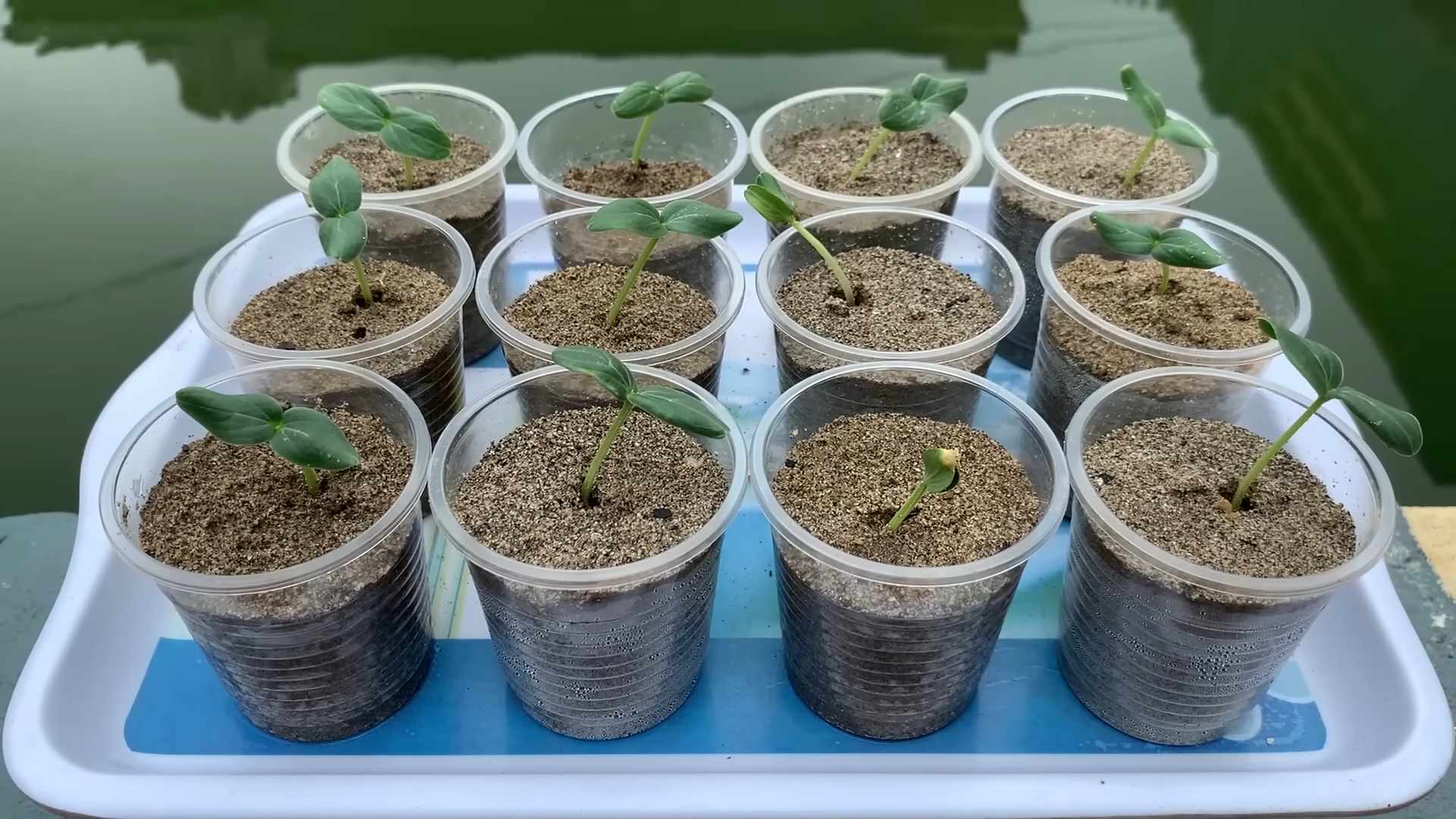
Conclusion
So, there you have it! Growing crunchy cucumbers indoors is not only achievable, but it’s also incredibly rewarding. Forget those bland, watery grocery store cucumbers – imagine biting into a crisp, flavorful cucumber you nurtured from seed to harvest, right in your own home. This DIY trick for indoor cucumber cultivation is a game-changer for anyone who loves fresh produce and enjoys a little hands-on gardening.
Why is this a must-try? Because it puts you in control. You control the environment, the nutrients, and ultimately, the quality of your cucumbers. You avoid harmful pesticides and herbicides, ensuring a healthier and more delicious final product. Plus, it’s a fantastic way to extend your growing season, enjoying fresh cucumbers long after the outdoor gardens have gone dormant.
But the best part? It’s adaptable! Feel free to experiment with different cucumber varieties. Bush varieties like Spacemaster or Patio Snacker are particularly well-suited for indoor growing due to their compact size. You can also explore different trellising methods to maximize space and support your growing vines. Consider using a vertical hydroponic system for even greater efficiency and yield.
Don’t be afraid to get creative with your nutrient solutions. While commercially available hydroponic fertilizers are a great starting point, you can also supplement with organic amendments like compost tea or worm castings for added flavor and micronutrients. Just remember to monitor your plants closely and adjust your feeding schedule as needed.
And speaking of monitoring, keep a close eye on your cucumber plants for any signs of pests or diseases. Early detection is key to preventing major problems. Regularly inspect the leaves and stems for aphids, spider mites, or powdery mildew. Treat any infestations promptly with organic pest control methods like neem oil or insecticidal soap.
We’ve covered the essentials for successfully growing crunchy cucumbers indoors, but the real magic happens when you put these techniques into practice. The satisfaction of harvesting your own homegrown cucumbers is unparalleled. The taste is simply unmatched. The feeling of accomplishment is truly rewarding.
So, what are you waiting for? Gather your supplies, choose your favorite cucumber variety, and embark on your indoor gardening adventure. We’re confident that you’ll be amazed by the results.
And most importantly, we want to hear about your experience! Share your tips, tricks, and triumphs in the comments below. Let us know what worked for you, what challenges you faced, and what delicious cucumber creations you’ve been making. Together, we can build a community of indoor gardening enthusiasts and unlock the secrets to growing the crunchiest, most flavorful cucumbers imaginable. Let’s cultivate a greener, healthier, and more delicious world, one indoor cucumber at a time! This DIY trick is waiting for you to try it.
Frequently Asked Questions (FAQ)
Q: What type of cucumbers are best for growing indoors?
A: While you can technically grow any cucumber variety indoors, bush or compact varieties are generally recommended due to their smaller size and manageable growth habit. Some popular choices include Spacemaster, Patio Snacker, Bush Champion, and Salad Bush. These varieties are bred to produce full-sized cucumbers on shorter vines, making them ideal for container gardening and indoor spaces. Vining varieties can also be grown indoors, but they will require more space and a sturdy trellis system to support their growth. Be sure to select a variety that is parthenocarpic (meaning it doesn’t require pollination) if you don’t want to hand-pollinate.
Q: How much light do indoor cucumbers need?
A: Cucumbers are sun-loving plants and require at least 6-8 hours of direct sunlight per day to thrive. If you don’t have a sunny window that provides sufficient light, you’ll need to supplement with artificial grow lights. LED grow lights are a great option as they are energy-efficient and provide the full spectrum of light that plants need for photosynthesis. Position the grow lights about 6-12 inches above the plants and adjust the height as they grow. Monitor your plants closely for signs of insufficient light, such as leggy growth or pale leaves.
Q: How often should I water my indoor cucumber plants?
A: Cucumbers need consistent moisture to produce juicy, crunchy fruits. Water your plants deeply whenever the top inch of soil feels dry to the touch. Avoid overwatering, as this can lead to root rot. The frequency of watering will depend on factors such as the size of the pot, the type of soil, and the ambient temperature and humidity. During hot, dry weather, you may need to water your plants daily. A self-watering container can help maintain consistent moisture levels.
Q: Do I need to pollinate my indoor cucumber plants?
A: It depends on the variety. Some cucumber varieties are parthenocarpic, meaning they can produce fruit without pollination. These varieties are ideal for indoor growing as you don’t need to worry about hand-pollinating. However, if you’re growing a non-parthenocarpic variety, you’ll need to hand-pollinate the female flowers to ensure fruit production. Female flowers have a small cucumber-like structure behind the flower, while male flowers do not. To hand-pollinate, use a small paintbrush or cotton swab to transfer pollen from the male flower to the female flower.
Q: What kind of fertilizer should I use for indoor cucumbers?
A: Cucumbers are heavy feeders and require a nutrient-rich fertilizer to support their growth and fruit production. Use a balanced fertilizer with a higher ratio of phosphorus and potassium than nitrogen (e.g., 5-10-10) to promote flowering and fruiting. You can also supplement with organic amendments like compost tea or worm castings to provide micronutrients and improve soil health. Fertilize your plants every 2-3 weeks during the growing season, following the instructions on the fertilizer label.
Q: How do I prevent pests and diseases on my indoor cucumber plants?
A: Prevention is key to keeping your indoor cucumber plants healthy and pest-free. Start by using a high-quality potting mix and providing good air circulation. Regularly inspect your plants for signs of pests or diseases, such as aphids, spider mites, or powdery mildew. If you spot any problems, treat them promptly with organic pest control methods like neem oil, insecticidal soap, or horticultural oil. You can also use beneficial insects like ladybugs or lacewings to control pests. Avoid overwatering and ensure good drainage to prevent fungal diseases.
Q: How long does it take to grow cucumbers indoors?
A: The time it takes to grow cucumbers indoors depends on the variety, growing conditions, and your level of care. Generally, you can expect to harvest your first cucumbers about 50-70 days after planting the seeds. Some faster-maturing varieties may be ready in as little as 45 days. Be patient and consistent with your watering, fertilizing, and pest control efforts, and you’ll be rewarded with a bountiful harvest of crunchy, delicious cucumbers.
Q: Can I grow cucumbers indoors year-round?
A: Yes, with the right conditions, you can grow cucumbers indoors year-round. The key is to provide consistent light, temperature, and humidity. Use grow lights to supplement natural sunlight during the winter months. Maintain a temperature of 70-80°F during the day and 60-70°F at night. Use a humidifier to increase humidity levels, especially during dry winter months. With a little extra care, you can enjoy fresh, homegrown cucumbers all year long.

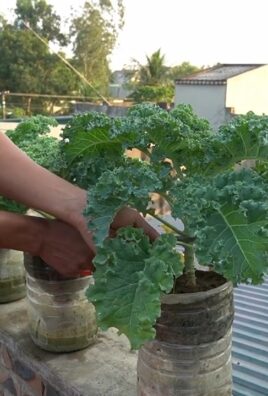
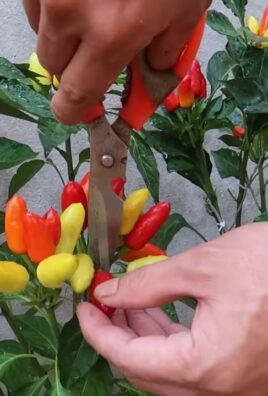
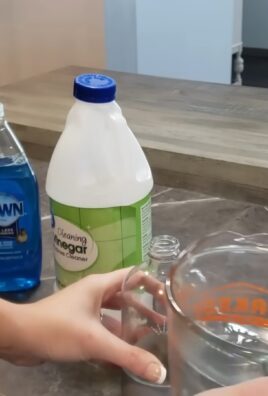
Leave a Comment